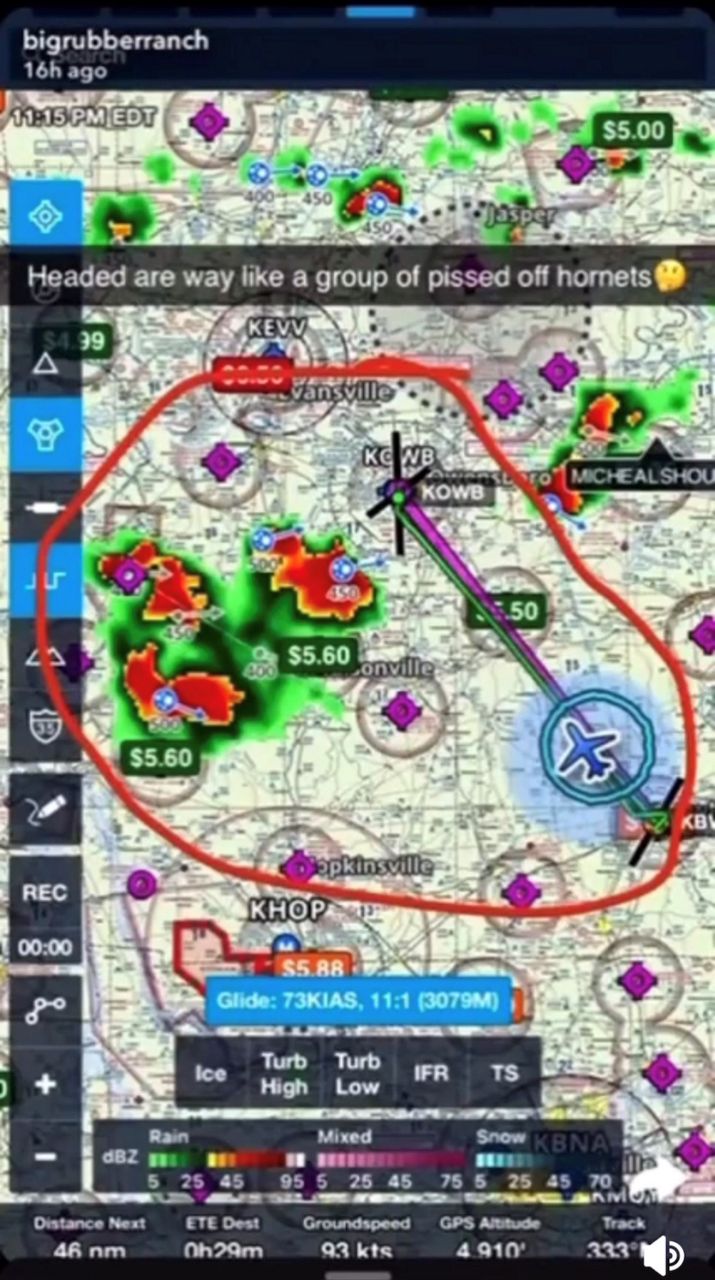WHITESVILLE, Ky. — The plane that crashed in Western Kentucky last month, killing a flight instructor and student pilot, was flying through poor weather conditions when it went down, according to a preliminary report released by the National Transportation Safety Board.
The Piper PA28, operated by Eagle Flight Academy in Owensboro, was destroyed when it crashed in a heavily wooded area near Whitesville, Ky. on Sept. 27. Flight instructor Timothy A. “Junior” McKellar, Jr., 22, of Custer and student pilot Connor W. Quisenberry, 18, of Beaver Dam died in the accident. They were flying to the Owensboro-Daviess County Regional Airport from Bowling Green on the return portion of a night cross-county flight, according to the report. It was their first time flying together.

The preliminary report shows the NTSB is using the flight instructor’s Snapchat posts from that night, along with air traffic control records to piece together a better timeline of the deadly flight.
It shows the pair left Bowling Green for Owensboro just before 10 p.m. CT. Around 10:15 p.m., McKellar posted to Snapchat a photo of their flight path overtop radar showing storms approaching their northwesterly route. McKellar annotated the photo, saying the storms were headed their way “like a group of pissed off hornets.” The NTSB included a partial screenshot of McKellar’s post in the report.
Twenty-nine minutes later, at 10:44 p.m., investigators said “the pilot” contacted air traffic control, and the controller advised there was “heavy to extreme” rain west of the airplane. Investigators said the plane continued its northwesterly course for about two more minutes until McKellar requested an instrument flight rules clearance, or IFR clearance, suggesting he may have needed to use instruments to help navigate the plane rather than relying on sight alone.
The controller issued the clearance and directed McKellar to go east, away from the storms. McKellar then told the controller the plane was “getting blown around like crazy.” The plane’s flight track showed the plane turned to the northwest and then did a right circling turn, according to the report.
The controller once again told the pair to go east and McKellar responded they were in “pretty extreme turbulence.”
The flight track showed a continuing right descending turn, according to the report, and air traffic control received no additional communication from McKellar. The plane’s last broadcast position (ADS-B) showed it at an altitude of 2,200 ft., about 1,000 ft. northwest of the large debris field that spanned 25 acres in a hilly, densely wooded area.
The NTSB’s preliminary report does not give a cause for the crash, but it reveals the plane’s left wing broke off the body of the airplane and said other parts of the plane were found throughout the wreckage. It could take months, a year or longer for the NTSB to determine a probable cause for the crash and issue a final report.
A pilot who is also a meteorologist tells Spectrum News 1 it is likely extreme turbulence tore the plane apart. He said this type of plane is not intended to fly through severe weather like the conditions that had formed in Western Kentucky the night of Sept. 27.



